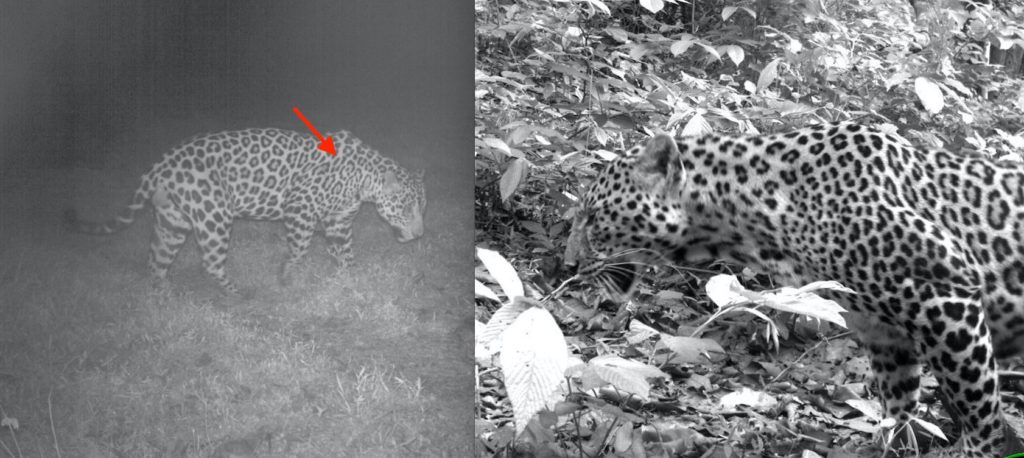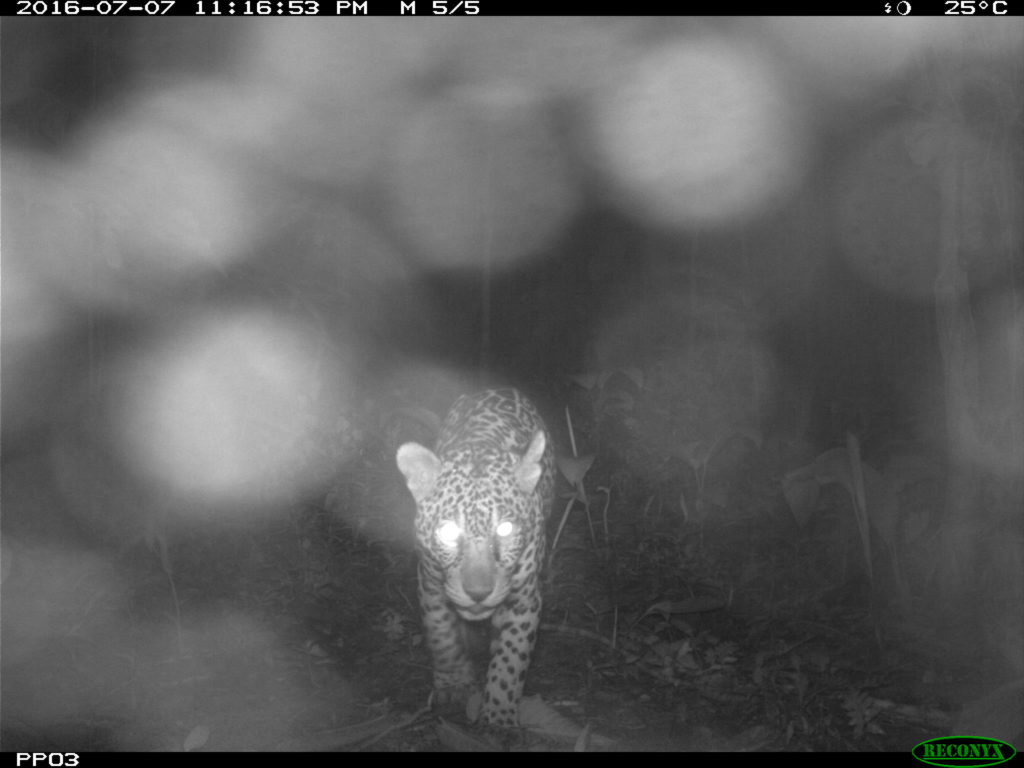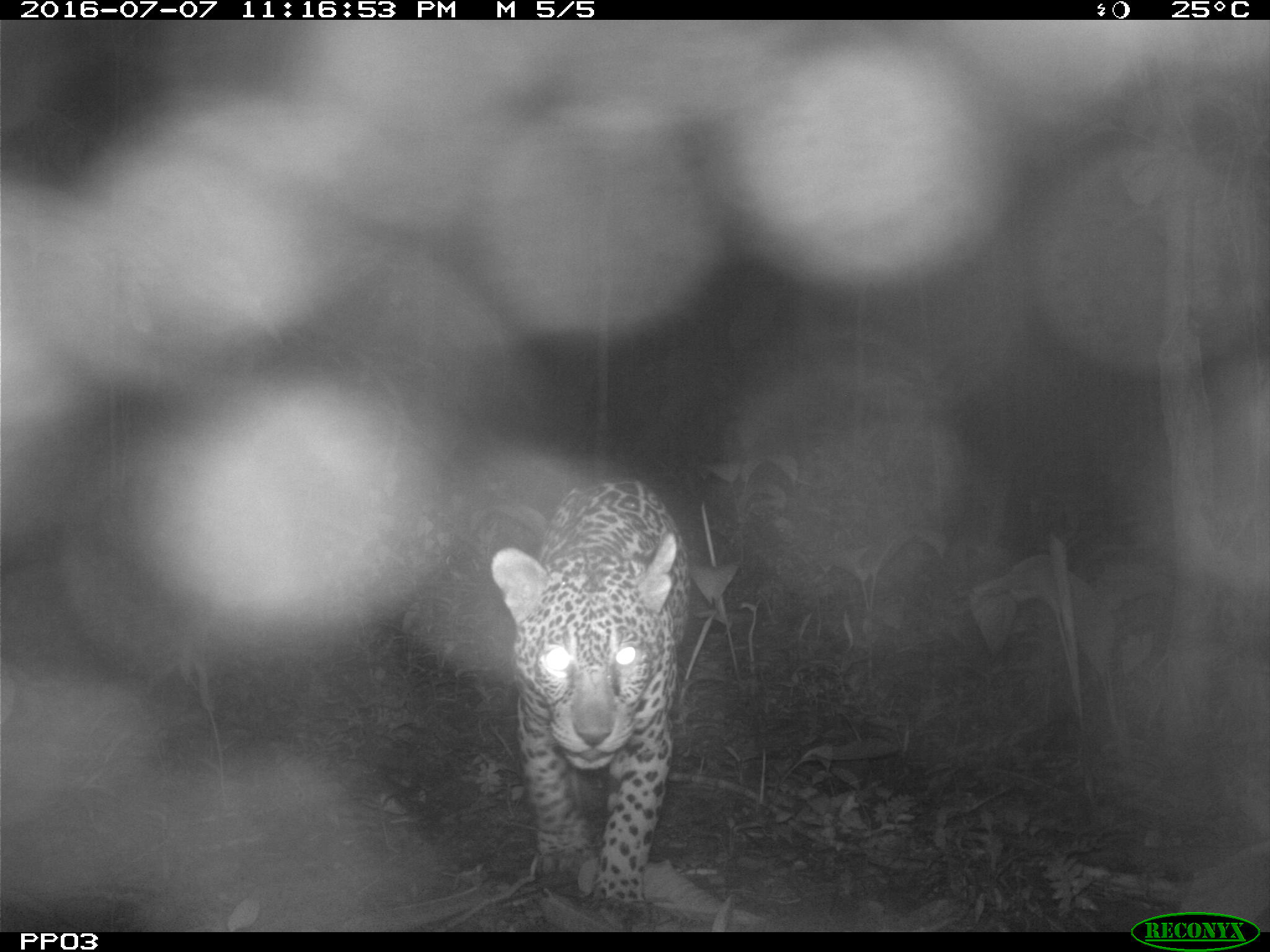Jaguar print doesn’t quite roll of the tongue, but actually a lot (maybe even most) of the prints we wear give leopards credit, but are really inspired by jaguars.
Jaguars (Panthera onca) are the biggest cat species of the new world, ranging from South America to the most southern points of the US near the Mexican border. Jaguars are in the genus Panthera, and therefore most closely related to lions and leopards. Similar to the leopard, jaguars have rosette “spots”, but inside the rosettes, you will also see another black spot. Variation occurs in these big cats, so in some individuals, the difference will be more prominent (you will see the dot easily), while in others it may be more difficult to see.
Also, within a jaguar coat, not all of the rosettes will have spots inside, and this will also vary between individuals; some will have a lot of rosettes with black spots, while others will have mostly empty rosettes. Like leopards, there can be melanistic jaguars, making them appear all black (colloquially “black panther”).

Jaguars are extremely elusive. If you go on safari in Africa, your chances of seeing a cheetah are pretty good. A leopard, is more difficult to spot, but many tourists still see them. Jaguars, on the other hand, are hardly ever seen, even by those who study them intensely. I recently attended a talk by Dr. Marcella Kelly at Virginia Tech, who studies these cats with camera traps, and despite spending years in jaguar habitat, has only seen them several times. This largely has to do with their forested habitat and secretive behavior.
Studying Jaguars
Camera traps, specialized cameras triggered by heat and motion, are one of the few and best ways to study these elusive animals. If your camera trap is set up in a jaguar’s home range and the individual passes by (some scientists use Calvin Klein Obsession to lure them), it will snap a photo of it stamped with the time and date. In another method, non-invasive genetics, the scientist tries to find jaguar scat (poop) to be used as a source of DNA. Finding jaguar scat in a rainforest is the quintessential needle in a haystack, which is why researchers like Dr. Karen DeMatteo, use canine companions to find the scat. These dogs can be trained to not only find jaguar scat, but also other cats and carnivores (ocelots, bush dogs, pumas). Given that dogs can walk a lot more than humans, they can also cover more ground.

Through camera trapping and genetic methods, you can identify individuals. In camera traps, capturing a clear image of the spots lets you be able to tell the individual because each jaguar has a unique spot pattern. Genetic methods also allow you to identify individuals because each jaguar has unique DNA. According to Kelly, camera traps are better for capturing more individuals in the population. However, genetic methods offer advantages that camera traps do not. For example, you can infer patterns of dispersal and connectivity, which has important implications for conservation, especially since jaguar habitat is becoming increasingly fragmented.
Conservation
The jaguar is near threatened on the IUCN Redlist and inhabits only 46% of its original range. One of the largest threats to jaguars is deforestation, which not only removes habitat for this large-ranging species, but also exposes individuals more to humans, making them more susceptible to poaching. Due to the success of anti-fur campaigns in the United States and the initiation of CITES, poaching for fur is no longer a large incentive. Rather competition for prey species (leopards and people hunt the same animals) and retaliation for or the fear of them killing livestock are the main drivers. As deforestation increases, it will be more difficult for individuals to move between protected areas due to poaching and other barriers such as roads, and therefore populations will become more vulnerable to the effects of genetic isolation like inbreeding.
Fashion
Like leopard print, jaguar print is extremely versatile. If you want a bolder, more dramatic look, wear a large garment (e.g. coat, dress, pants) and for extra drama, add high contrast colors. If you are more demure, have the jaguar print be in a scarf, bag, or your shoes. Also similar to leopard print, you can combine jaguar with a range of colors. If you are not as adventurous, you can wear mostly neutrals (tans, black and white), or combine with pops of colors; red always is a great addition, but don’t forget about green, blue, purple. You want to choose brighter, stronger colors when combining with jaguar print because the print acts as a neutral and you don’t want the other colors to get washed in with the look.
This post was originally created on the Wildlife SNPits.
SaveSave
SaveSave
SaveSave
SaveSave
SaveSave
SaveSave
Love this post? Share it with friends!




